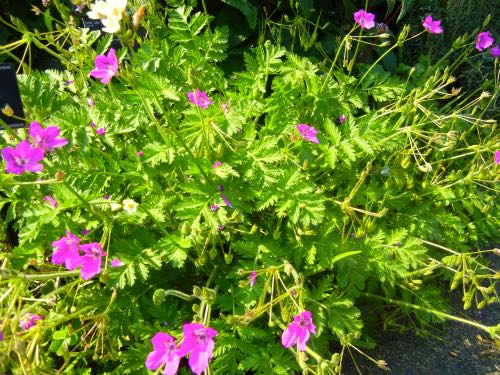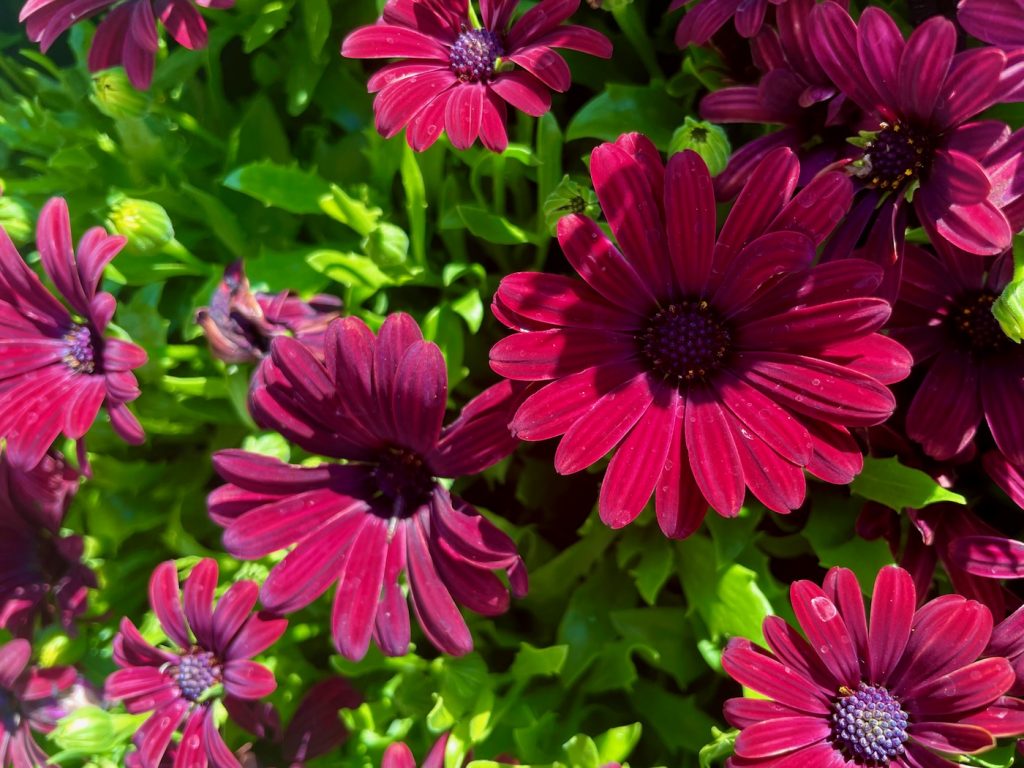Discover the Beauty of Erodium manescavii: A Delicate Herbaceous Perennial
Background: A Charming Member of the Geraniaceae Family
Erodium manescavii, also known as Manescau Storksbill, Manescau Heronsbill, or Erodium manescavi, is a captivating herbaceous perennial that enchants with its delicate beauty. This clump-forming plant, belonging to the Geraniaceae family, offers unique characteristics and a rich history. Delve into the allure of Erodium manescavii as we explore its description, origin, and essential cultivation tips.
Characteristics: Pinnately Shaped Leaves and Saucer-Shaped Flowers
Erodium manescavii showcases pinnately shaped leaves in a medium green hue. These toothed leaves, reaching lengths of up to 30cm or 1ft, add an elegant touch to the plant’s overall appearance. Additionally, clusters of pink-lilac-colored flowers grace Erodium manescavii during its blooming period from early summer to early autumn. These saucer-shaped blossoms often feature eye-catching spots on their upper petals, enhancing their allure.
Description: Fragrance, Beauty, and Ecological Benefits
The flowers of Erodium manescavii emit a delightful fragrance that acts as a magnet for bees and butterflies, making it a wonderful addition to pollinator-friendly gardens. Moreover, the plant’s dense foliage and attractive flowers provide ornamental value, creating a visually pleasing landscape. As Erodium manescavii tends to self-seed, deadheading the flowers after blooming can help control its spread. Additionally, cutting back the plant post-bloom stimulates new growth and ensures its continuous beauty.
Origin and Native Habitat: A Native of the Pyrenees in Europe
Erodium manescavii is native to the picturesque Pyrenees region in Europe. This perennial thrives in its natural habitat, which features well-drained soil and receives abundant sunlight. Its ability to withstand challenging growing conditions makes it a resilient choice for gardens with similar characteristics.
Discovery and Naming: A Published Gem
Erodium manescavii was first documented and published in Annales des sciences naturelles sér. 2, 7: 205 (1847). Its discovery and subsequent recognition as a distinct species have contributed to its popularity among plant enthusiasts worldwide.
Cultivation of Erodium manescavii:
To successfully grow and maintain Erodium manescavii in your garden, follow these essential guidelines:
Optimal Growing Conditions: Choose a sunny spot in your garden for Erodium manescavii, as it thrives in full sunlight. The plant requires well-drained soil with a neutral to alkaline pH level. Aim for a south-facing or west-facing exposure to provide the best growing environment for this perennial.
Planting and Propagation: Erodium manescavii can be planted in either spring or fall. Select a location that offers full sun or partial shade, ensuring the soil is well-drained. Before planting, amend the soil with compost or well-rotted manure to enhance its fertility. Space the plants approximately 6-8 inches apart to provide adequate room for growth.
Watering: While Erodium manescavii is drought-tolerant, regular watering is beneficial during hot and dry weather conditions. Provide deep watering once a week, or more frequently during periods of intense heat. Avoid overwatering, as the plant prefers well-drained soil. Before watering, check the moisture level by inserting your finger into the soil to a depth of about an inch. If it feels dry at that depth, it’s time to water. Remember to adjust the watering frequency based on local weather conditions and the specific needs of your garden.
Fertilization: Erodium manescavii is not particularly demanding when it comes to fertilization. A light application of compost or well-rotted manure in the spring is usually sufficient to provide the necessary nutrients for healthy growth. Avoid excessive use of chemical fertilizers, as they can lead to excessive foliage growth at the expense of flower production.
Pest and Disease Management:
Erodium manescavii is generally resistant to pests and diseases. However, occasional infestations of aphids, spider mites, or powdery mildew may occur. Monitor your plants regularly and take appropriate action if you notice any signs of pest or disease presence. Insecticidal soaps or organic neem oil can effectively control aphids and spider mites. For powdery mildew, ensure proper air circulation around the plants by providing adequate spacing and avoiding overhead watering. If necessary, use a fungicidal spray specifically designed for powdery mildew control.
Winter Care: Erodium manescavii is hardy in USDA zones 4-9. In colder regions, the plant may die back to the ground during winter. Provide a layer of organic mulch, such as leaves or straw, around the base of the plants to protect the roots from freezing temperatures. Mulching also helps to conserve moisture and suppress weed growth. In regions with milder winters, Erodium manescavii may retain its foliage throughout the year, requiring minimal winter care.





